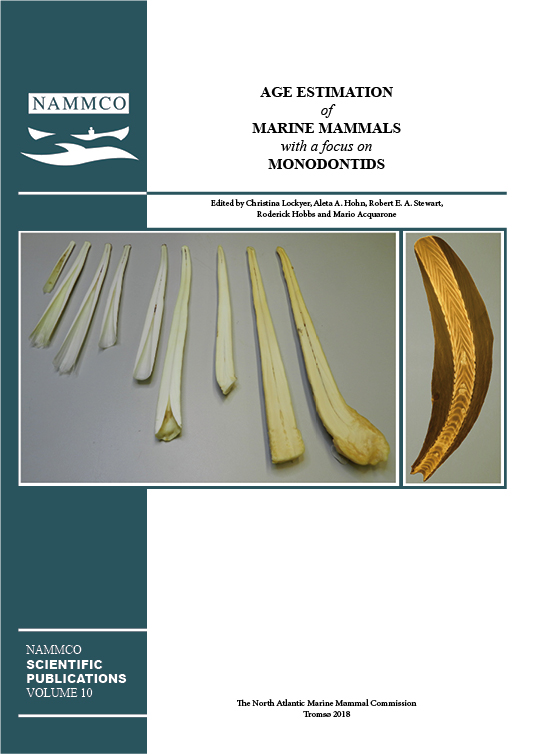Two techniques of age estimation in cetaceans: GLGs in teeth and earplugs, and measuring the AAR rate in eye lens nucleus
DOI:
https://doi.org/10.7557/3.4184Keywords:
Fin whale, Balaenoptera physalus, minke whale, Balaenoptera acutorostrata, harbour porpoise, Phocoena phocoena, aspartic acid racemization, AAR, age estimation, growth layer groups, GLGsAbstract
The ages of three species of cetaceans were estimated by counting the growth layer groups (GLG) and measuring the aspartic acid racemization rate (kAsp) by what is referred to as the Aspartic Acid Racemization (AAR) technique. Data on kAsp and the D/L ratio of aspartic acid at birth [(D/L)0] in North Atlantic common minke whales (Balaenoptera acutorostrata) are presented along with data on fin whales (B. physalus) and harbour porpoises (Phocoena phocoena) already published by Nielsen et al. (2012). The kAsp specific for minke whales was 1.40 x 10-3 yr-1 (SE ± 0.00005) and the (D/L)0 was 0.0194 (SE ± 0.0012). The correlation of GLG age and D/L ratio for all three species was highly significant; however, the correlation coefficient varied greatly (fin whales: R2 = 0.59, p <0.0001; minke whales: R2=0.96, P <0.0001; harbour porpoises: R2=0.36, P <0.0001). Asymptotic body length for all three species was estimated by a von Bertalanffy growth model on both the GLG and AAR techniques, and showed no difference.





